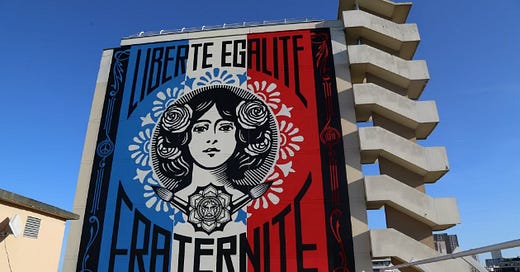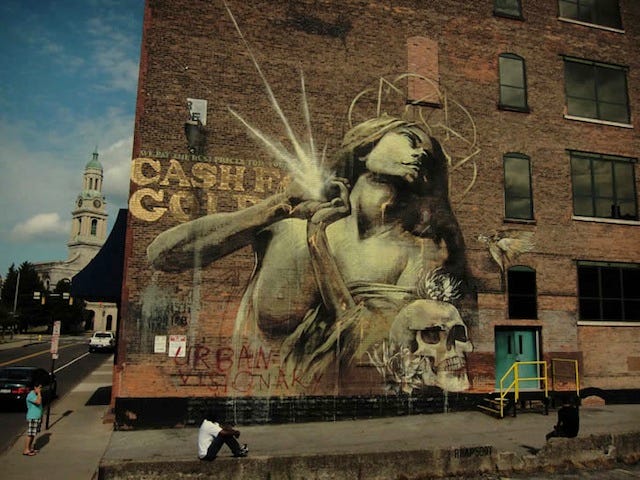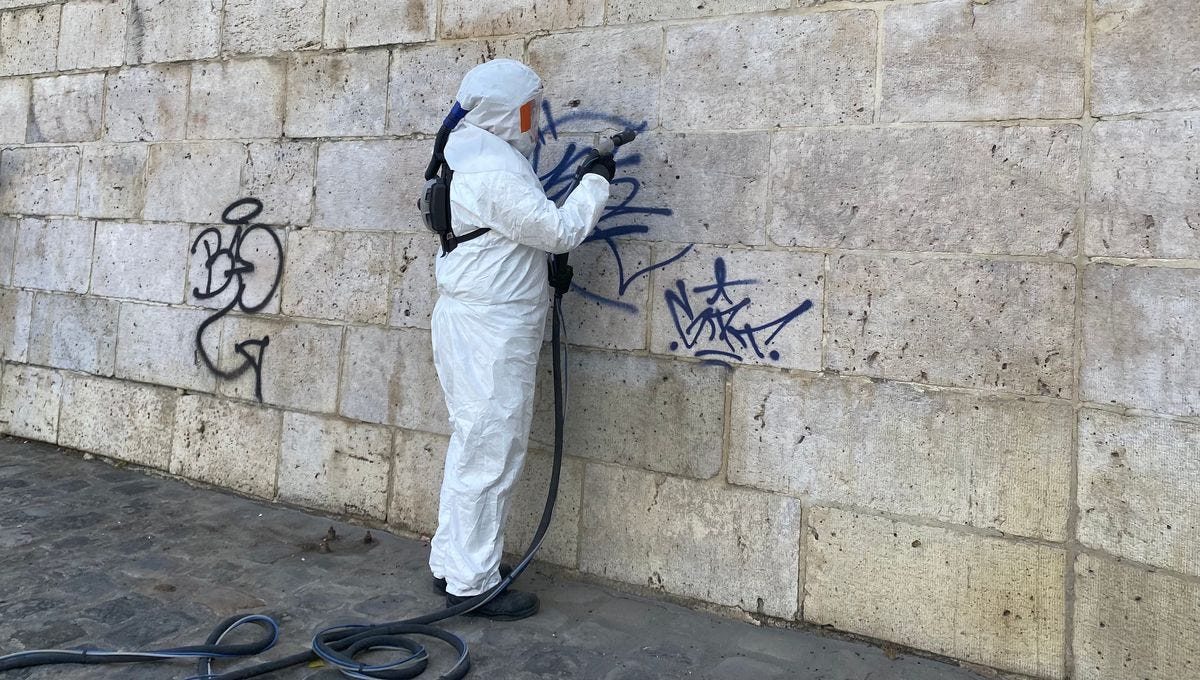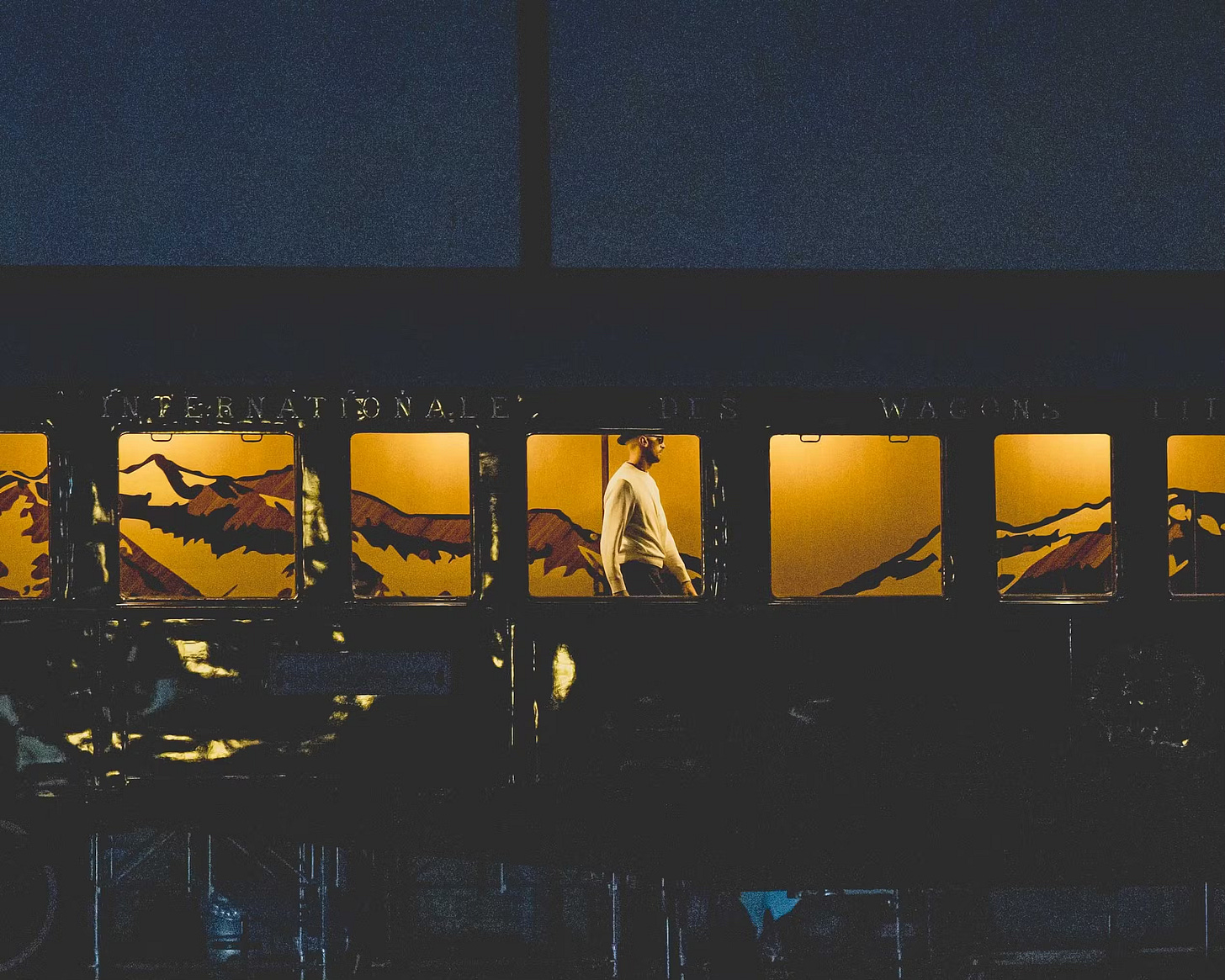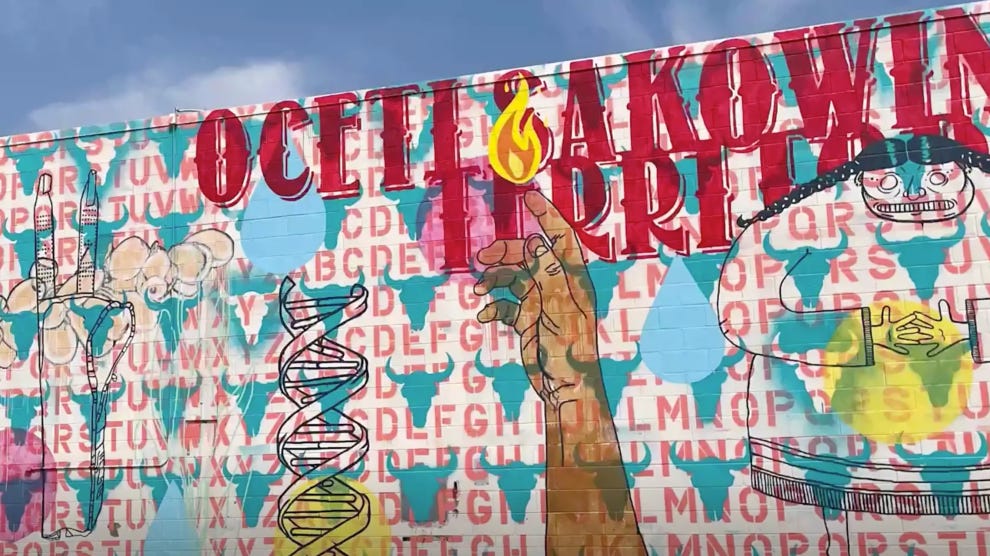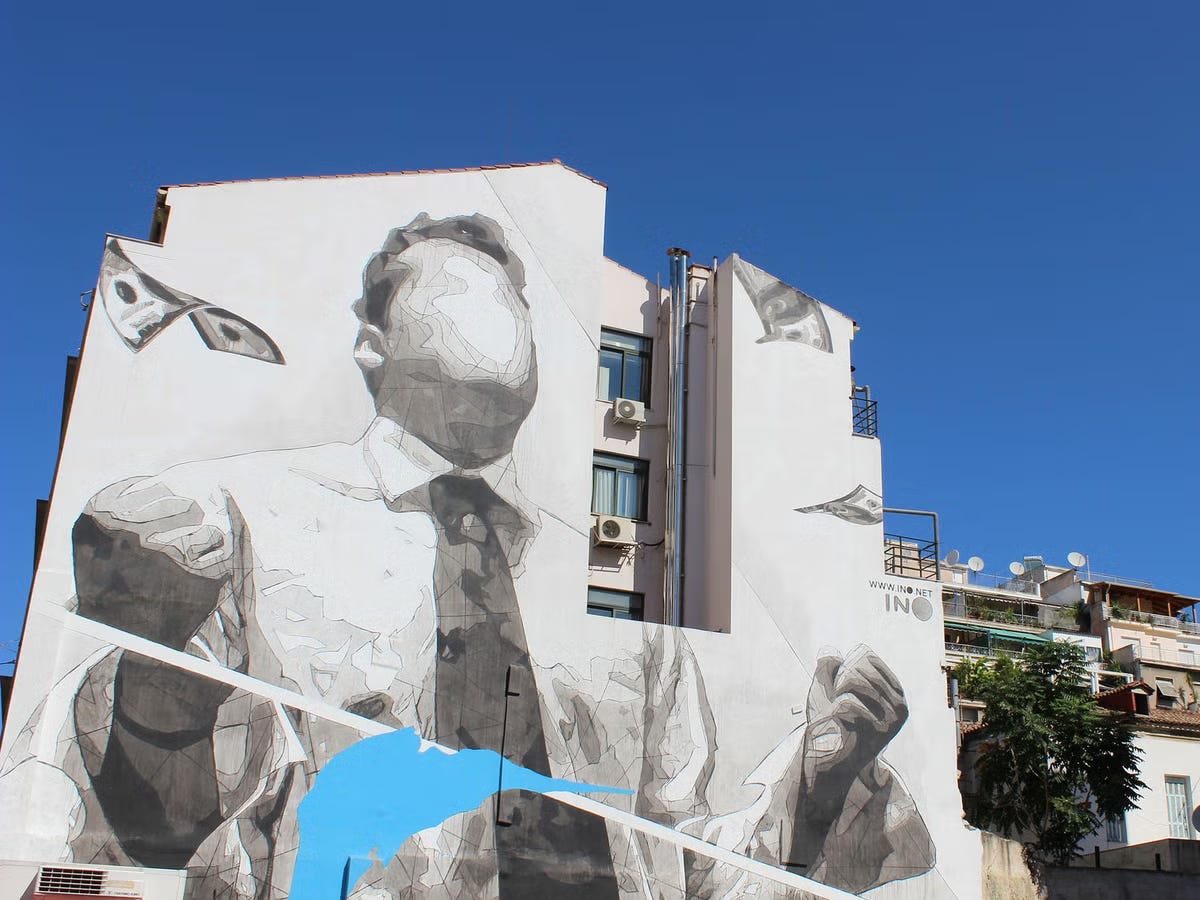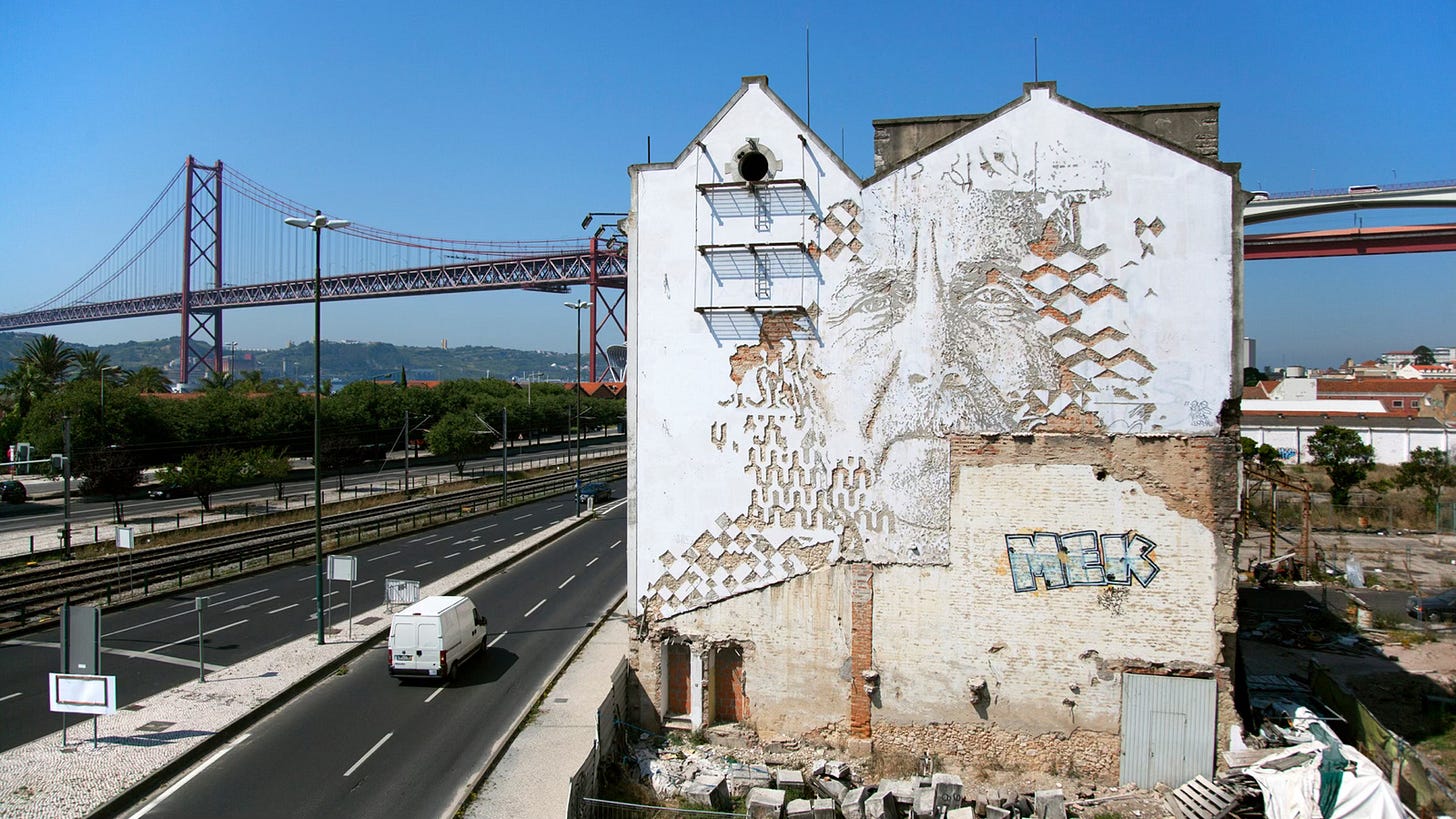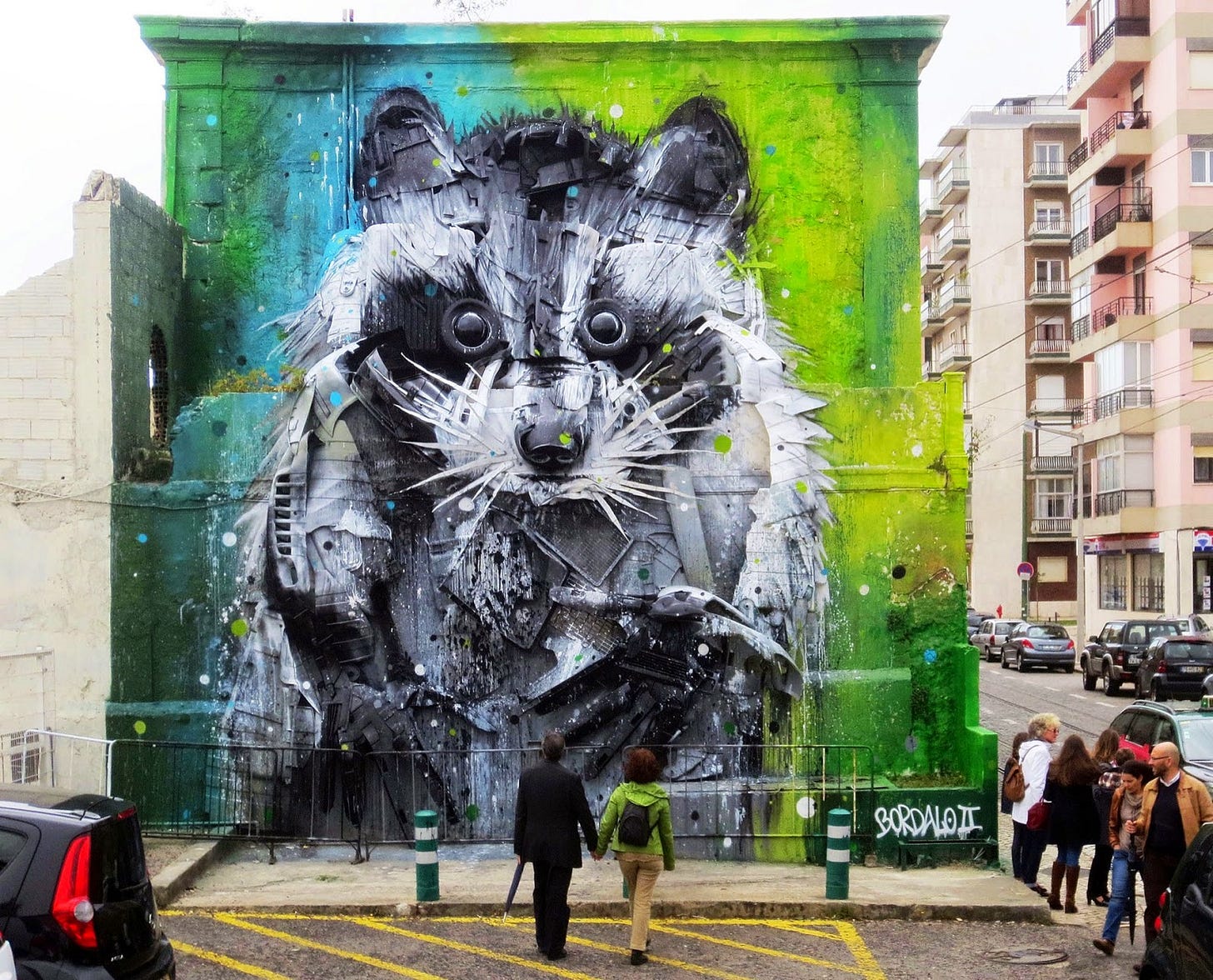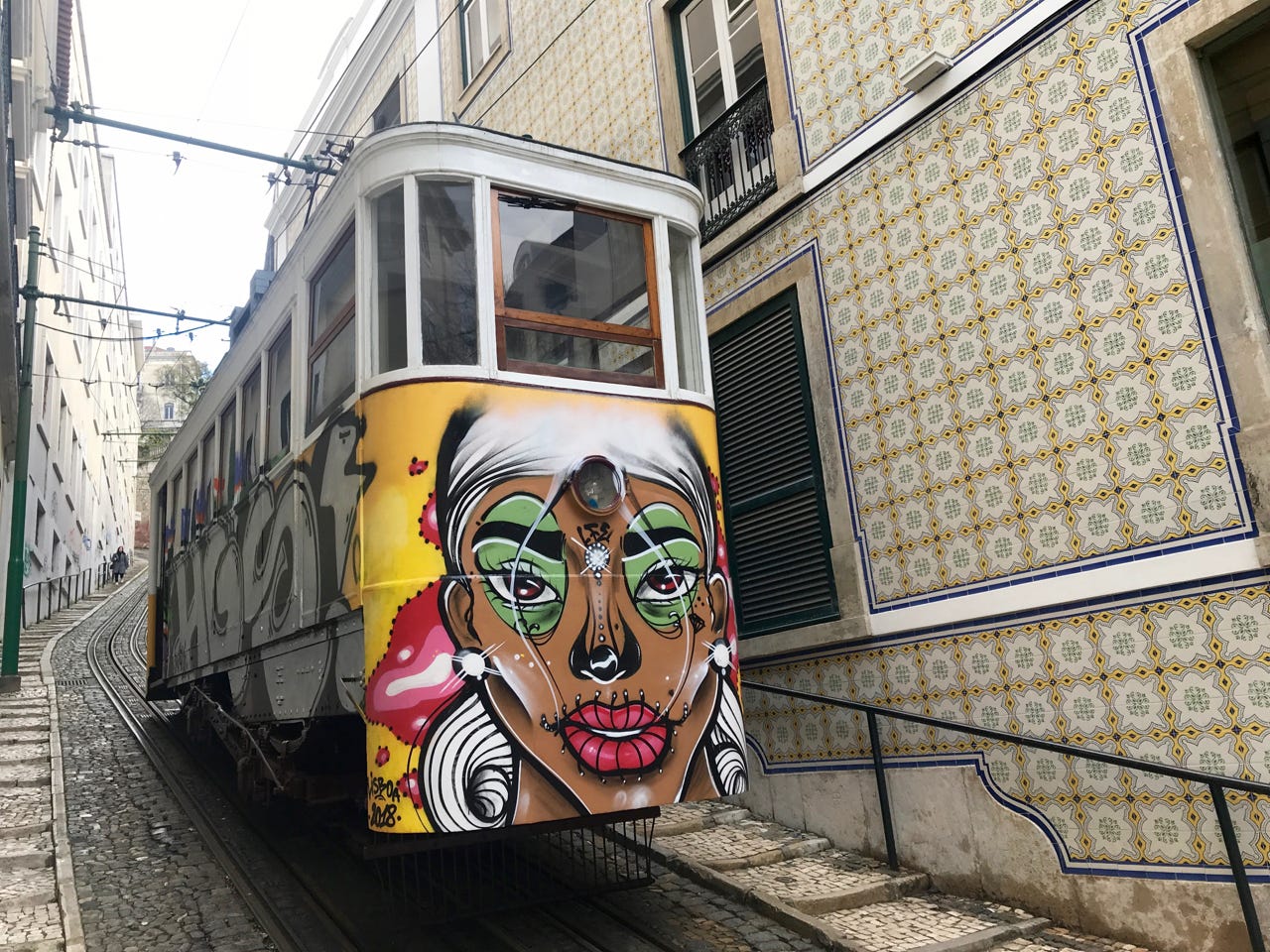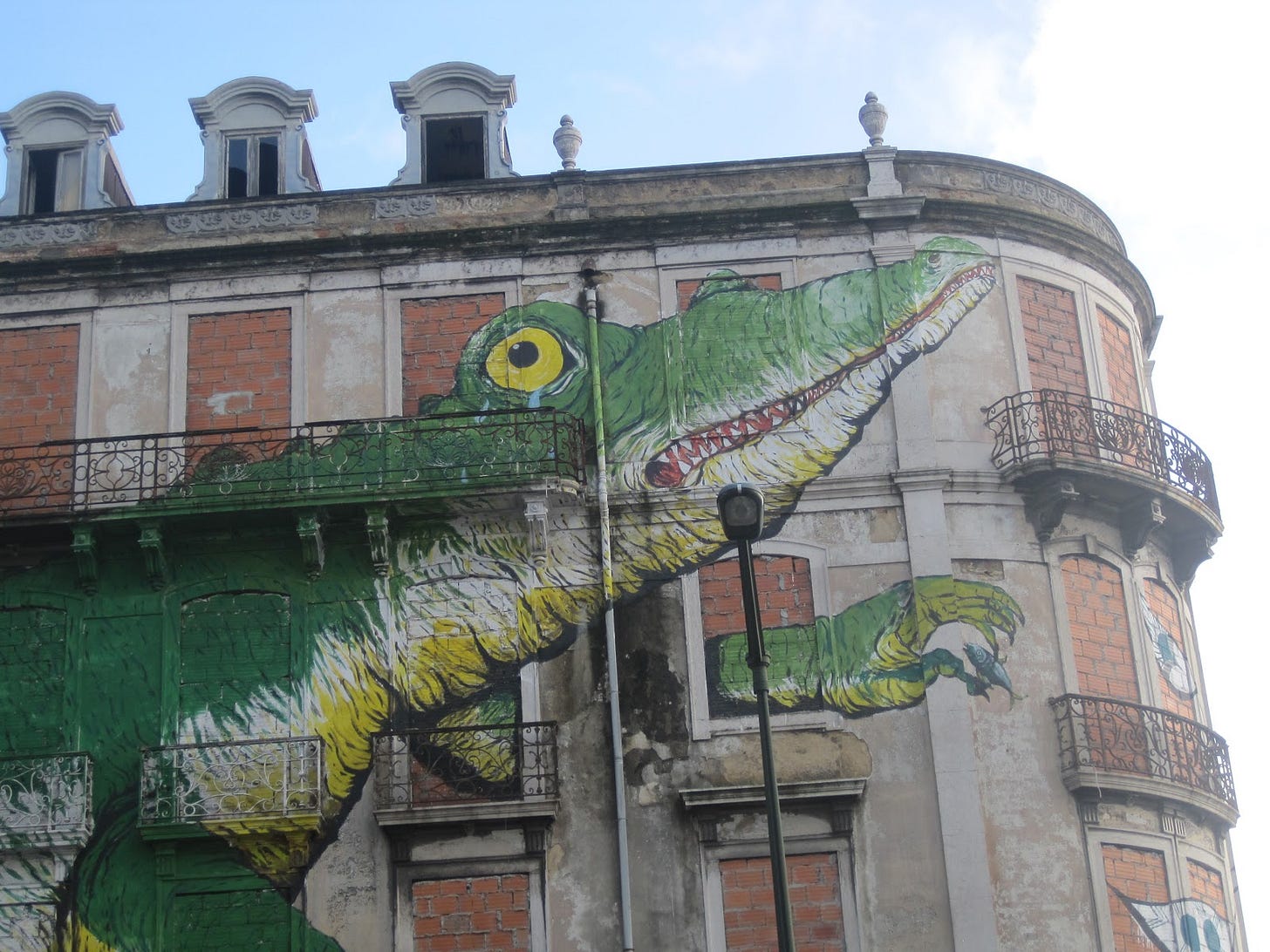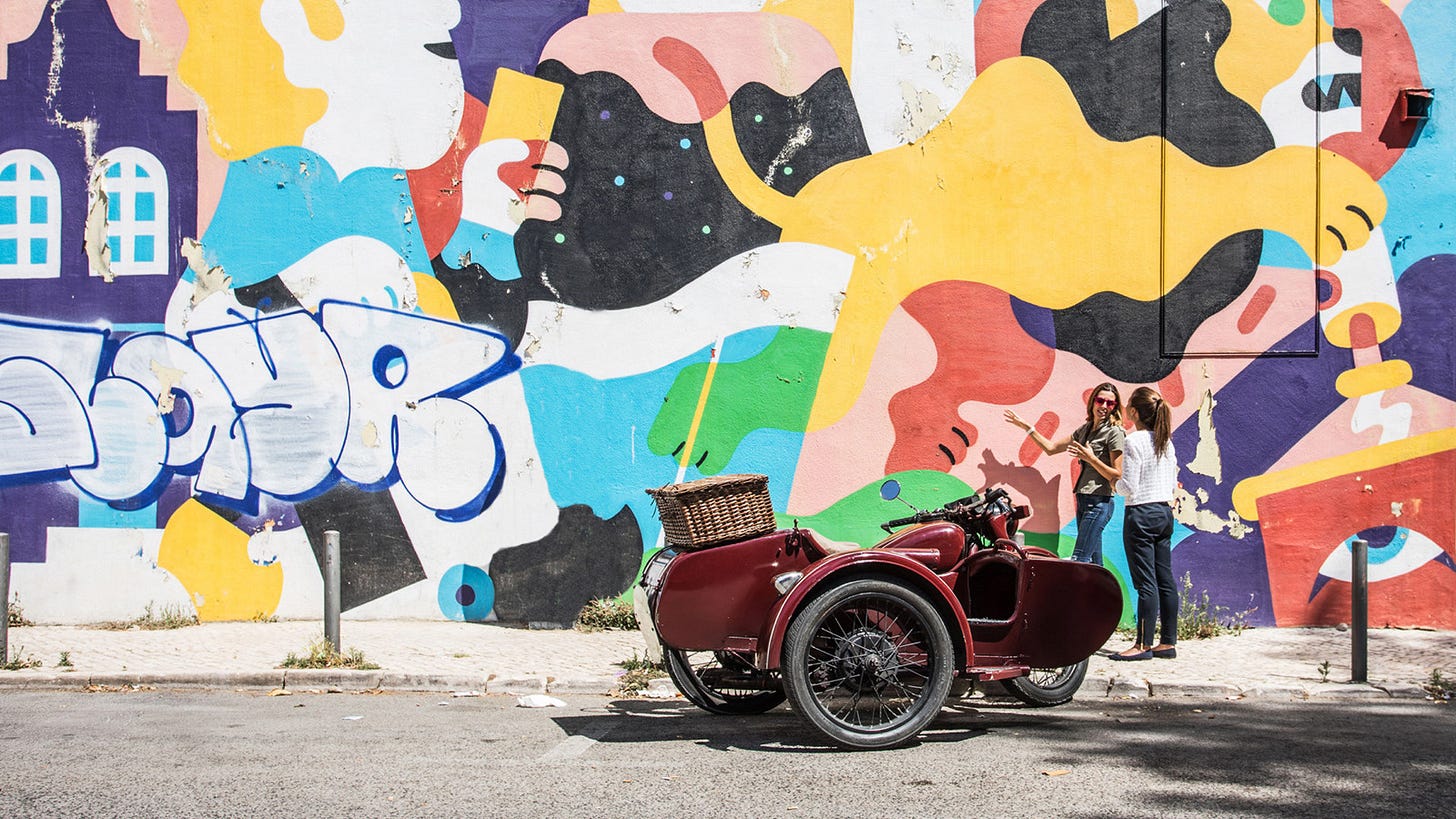Graffiti - or shall we call it street art - has been on my mind a lot as I have been cruising around Europe for the last few months. It is, in its very essence, political. The act of creating art, the act of expressing yourself in the street is just simply political. So what does that mean as a true demonstration of individual expression? Or is it a bellwether for what’s really happening in the world. AI, war, climate change, corruption, Kamala…
Street art or Graffiti is hard to define. Is it art? Is it vandalism? Is it a cultural statement? An eyesore? Or is it part of the subculture that is always being suppressed? I myself have made some graffiti art back in my youth in Johannesburg, inspired by local politics and making a statement against Apartheid (which, even after Mandela was released from prison and became the leader, still had a revolting foothold in South Africa). But I was 16 and certainly not an artist.
Today, from my vantage point, graffiti/street art is absolutely everywhere - from incredible intricate awe-inspiring works by people like Faith47, to the rather simplistic “Free Gaza” I have seen all over the globe. To the more severe incidents like just before the 2024 Olympics in Paris, there was a graffiti “attack” at the Holocaust Museum that the French authorities are investigating to see whether it was a destabilization operation coordinated by Russia………I shall let you Google those images yourself.
Faith47
But scribbling your political musings on walls has been happening for decades. In Paris, the oldest trace of this sort of protest writing on walls can be found at Place des Voges and it reads: “1764 Nicolas.” And then years later, in 1952, Guy Debord (theorist of the Situationist movement) wrote in chalk on a wall a phrase borrowed from Rimbaud: “Never work” which set off a new movement of thinking which still prevails today. Next came the Situationist International and they were tagging as the May 1968 protests were taking place: “Sous les pavés, la plage” meaning there is a desire for freedom under French constriction.
And this sentiment continues here right now…
And graffiti is also in the news constantly like this abandoned Hollywood Hills mansion that has long been left vacant and become a popular target for graffiti artists and squatters - was finally closed down. And as reported in the SF Standard the Tenderloin area of San Francisco is getting a graffiti clean up - as the four mayoral candidates start circling for their election.
And then perhaps my favorite nugget in the news is that the artist (call him a street artist perhaps, why not, although his work on the streets are commissioned but also highly political) JR is designing a sleeper carriage for the legendary Belmond train - according to Belmond it will be “joining the rake in 2025, and this private carriage is the first to be designed by an artist on board the Venice Simplon-Orient-Express.”
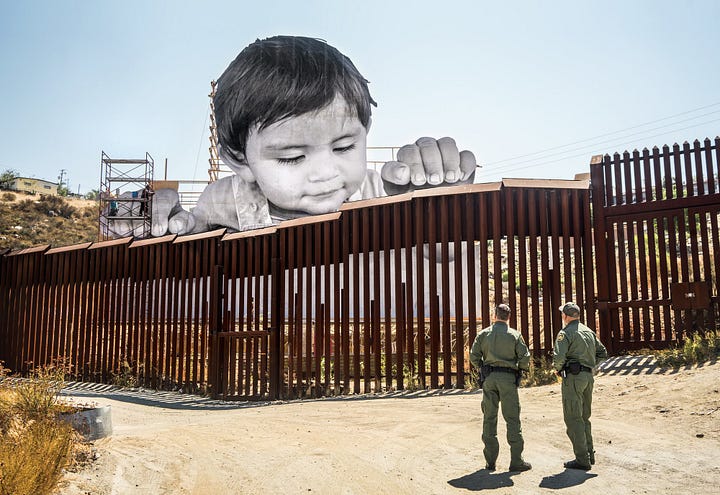
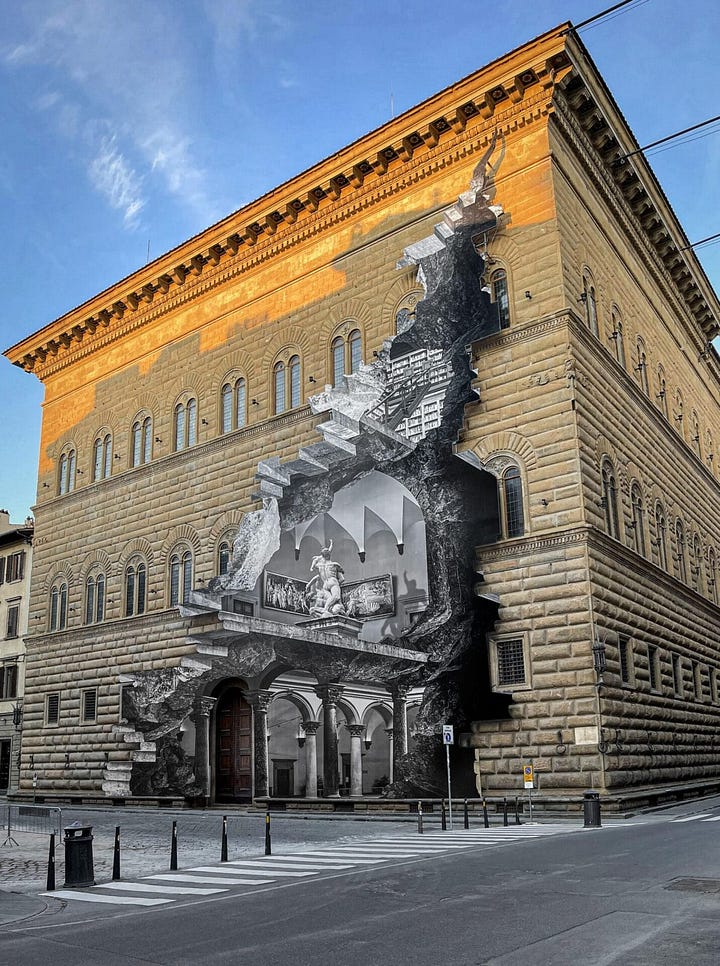
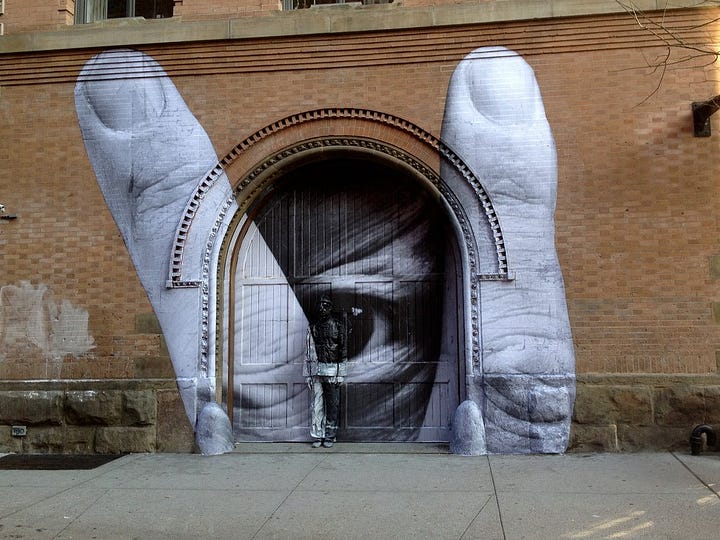
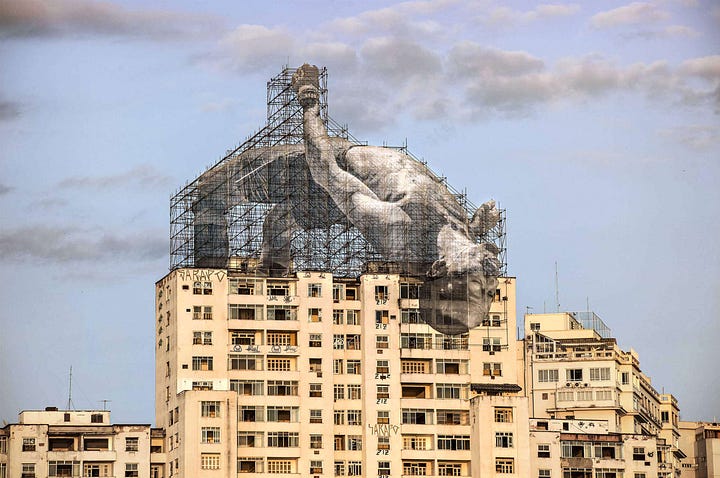
Some of my favorite work from JR on the streets
But speaking of San Francisco, I have a friend in the city whose dustbin was tagged recently whilst I was visiting and it sparked a debate between us. When is graffiti acceptable, and when is it vandalism and illegal? Or when is it simply art that was commissioned and paid for by (*well probably a brand with tons of money) someone who wanted an artist to enhance their building…
Maybe a pop back into time can illuminate.
In Rapid City - “Rise, Stand Up” is by an Indigenous Artist, Micheal Two Bulls, and was commissioned by the city’s Racing Magpie arts organization with CARES Act funding.
Cave men and women really invented graffiti. Dating back to 38,000 BCE prehistoric humans scratched their cave’s walls and ceiling as expressions of themselves, and, of course, their world. Today, this art form has somewhat evolved; taken to the streets and into the minds of the cognoscenti.
Modern times have given us easy access to spray paint and marker pens (opposed to the rocks used in Ancient Egypt) and the messaging has become stronger and fantastically more relevant. Contemporary graffiti, entwined with hip-hop music and New York’s avant-garde art world of the 20th century, is a tool of communication – expressing hopes, dreams, and, above all, a call to arms.
It was, after all, Banksy, the famed masked satirical street artist from Bristol in the United Kingdom, who mimed lyrically: “Imagine a city where graffiti wasn't illegal, a city where everybody could draw whatever they liked. Where every street was awash with a million colours and little phrases. Where standing at a bus stop was never boring. A city that felt like a party where everyone was invited, not just the estate agents and barons of big business. Imagine a city like that and stop leaning against the wall - it's wet.” And so street art took the baton, and ran with it.
Well, I was recently in Athens and every single building, every single inch of space was tagged and graffitied and then I started to wonder if perhaps this has gone too far. But nevertheless, I am merely here for some art appreciation…so let’s continue.
In Lisbon, they want to think of graffiti more in terms of art…or street art.
“There are plenty of artists creating free, unsanctioned art in the streets, keeping alive that raw energy and creativity which gave rise to the art form in the first place,” says Hakeem Osman, a member of the Lisbon based cultural platform Underdogs. “The beauty lies in this coexistence we see today.” Underdogs, created in 2010, uses their know how and love for street art to foster spaces within the contemporary art scene for artists connected with the new languages of urban-inspired graphic and visual culture. And the city of Lisbon feels this love, exactly.
Portugal’s cute capital seems to be currently placed in the vanguard of the global street art scene; with both the city authorities and its citizens truly embracing this new form of public art. In fact, the City Council, has promoted the artistic side of street art and curbed illegal graffiti. “So many artists emerge from the Lisbon street scene and are leaving their mark around the world. We're obviously biased on this one, but look at how Vhils has revolutionized urban art,” smiles Osman.
According to Osman, the street art world has changed over the last ten years from an illegal, low-key scene focused on works done in a hurry to a generalized acceptance by cultural and municipal institutions. And it is these very institutions that have helped develop a new form of public art based on sanctioned large-scale productions – allowing for perceptions to change. “This new approach has brought about many benefits: it has enabled artists to develop and present their work in ideal conditions; it has enabled street art to better integrate into the city fabric and it has given it a legitimacy which has results in recognition by researchers and art specialists as a serious, valid art movement in its own right,” says Osman.
Street art, with its gestures against society, has finally come into the mainstream conversation and with Twitter hash tags - like #BlackLivesMatter – become contemporary society’s show of their hand. But like Osman says it’s hard to predict how it will evolve in its next incarnation. “The amazing thing about this movement is precisely how much it has already contributed towards changing our cities in such a short time,” he continues. “The work of these artists has helped reshape our perception of the city and the way we enjoy and live in it. We can only believe that further generations of artists and activists will keep on interacting with the city, bringing about positive change.”
If you’re in Lisbon, book a street art tour in a side car with the Four Seasons. We loved it.
Oh and for more on Underdogs, visit their website: http://www.under-dogs.net/about/.
I am not sure if I settled the debate in my mind yet, is it art? Is it a crime? Commissioned artwork and murals are OK? Tagging offensive slogans not Ok. Maybe I shall walk around Montmartre now and think about this a little more…

